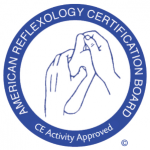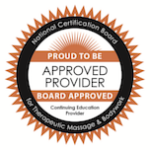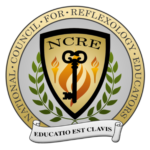
When our feet ache we feel it all over our body. This can easily cause us to slow down in our daily activities which can further slow down the various systems within the body, such as circulatory, respiratory, and cardiovascular systems.
Reflexology can help to minimize this cycle of slow down.
Reflexology is a non-invasive natural health science based on the concept of reflex maps on the feet, hands, and outer ears which correspond to every part, organ, and gland in the body. When health imbalances occur in our body, blockages of different chemical types accumulate in the corresponding reflexes located in the feet, hands, and ears. By gently breaking down these blockages, the corresponding part of the body is also likely to experience some form of relief. Balance and health often return to the affected areas.
The many health benefits of Reflexology include pain reduction, improved circulation, increased oxygen and nutrient supply to the brain, enhanced post-operative rehabilitation, and strengthening of the immune system.
Reflexology is known to help with neuropathy by improving circulation, stimulating nerves, and relieving pain. Therefore, Reflexology can be a very effective way to help with any form of peripheral neuropathy. Recovering from hip or knee replacement almost always involves some pain and swelling in the leg. One of the great benefits of Reflexology is that it improves the blood and lymph circulation, which, in turn, helps to speed up the healing process, in addition to pain reduction.
The existing research into the effectiveness of Reflexology in treating arthritis has focused on its ability to reduce pain and/or the need for pain medications. Regular sessions have been shown to be a very useful therapy for managing the pain, stiffness and swelling of joints, and other issues associated with arthritis in any part of the body.
What happens during a Reflexology session? After a brief health history is taken, you lie down on a cushioned Reflexology table, only your shoes and socks are taken off. While the Reflexologist is working on your feet, hands, and ears you may experience waves of relief taking you deeper into profound relaxation. You feel aches and strains melting away.
Stefanie Sabounchian is nationally certified reflexologist with a private practice in La Verne. In addition, Stefanie offers reflexology sessions at the Hillcrest Retirement Community in La Verne on Tuesdays. To make an appointment, please call Stefanie at 909-896-3610.
Fibromyalgia Syndrome (FMS) affects approximately 2-4% of the population, predominantly women, according to the American College of Rheumatology. This makes it the second most common musculoskeletal system ailment with osteoarthritis taking first place. To this day fibromyalgia is an often misunderstood and even unrecognized disorder that causes widespread muscle pain and tenderness which tends to come and go and move about the body. This common and chronic condition typically is associated with fatigue and sleep disturbances.
While there has not yet been found a cure for fibromyalgia, reflexology and other complementary therapies have proven to be effective for addressing a variety of fibromyalgia symptoms. Clients with fibromyalgia who receive regular reflexology sessions report improvement in pain reduction, tension headache, fatigue, sleep disorder and more. A private study, conducted by Linda Chollar of the Pain Free Path Wellness Center, included a 30 minute foot reflexology protocol given to 16 female clients, age 40 to 59, with a physician diagnosis of fibromyalgia. Consistently, pain levels reduced at each 5 minute interval recorded by a medical student. At the conclusion of each foot reflexology protocol, client graphs indicated a reduction from their beginning pain levels to a pain level of zero.
Since 2003, I have been working with clients suffering from fibromyalgia with good results. In my practice, I am using the integrated approach of foot, hand and ear reflexology, which helps to address fibromyalgia symptoms on three different micro systems of the body, also called reflex maps, for better results of the wide variety of symptoms. The ears are a remarkable tool in pain reduction and tension release in the musculoskeletal system, especially the neck and lower back. In addition to the 'body map,' we find certain pain control points and other 'masterpoints' on the ears to help with fatigue, sleep disorder, temporomandibular joint disorder (TMJ), and headaches. Other fibromyalgia symptoms, like irritable bowel syndrome, gastroesophageal reflux and irritable bladder can be best addressed on the feet while other symptoms, like migraines, show more reliable results with working on the hands.
This is what Ms. Morrison of La Verne, receiving reflexology sessions on a regular basis since August 2003 reports: "I was desperate for lasting pain relief from fibromyalgia when I saw an ad for reflexology in the local La Verne paper. Physical therapy gave immediate, but not lasting relief. I had used reflexology in the past; however, it was not the integrated technique of manipulating the ears, hands, and feet. I was later diagnosed with and still have lupus, which, like fibromyalgia, comes with extreme fatigue. Reflexology can give relief to specific areas. I often express neck pain, lower back pain, or the left kidney area. In addition to the reflexology, Ms. Sabounchian introduced me to Atlas Spinal Care (NUCCA), which in addition to my regular Reflexology appointments, compliments each other, and I am finally pain free for long periods of time. I am always totally relaxed during and after my reflexology sessions".
While reflexology and other complementary therapies can make a great difference in dealing with fibromyalgia, we must also remember the importance of self-care. Limiting our physical and emotional stress as much as possible, getting enough sleep, getting regular exercise and maintaining a healthy lifestyle are all critical in the management of FMS.
For more information please contact Stefanie at 909-896-3610 or email her at
References:
Linda Chollar, Fibromyalgia Study, www.painfreepath.com
American College of Rheumatology, Practice Management, Fibromyalgia
Reflexology has long been viewed by many Americans and medical professionals as little more than a foot massage. Recent scientific studies show that chronic pain, digestive disorders and other common health problems can be relieved through the use of reflexology. The science and study of today's reflexology was developed by three medical doctors in the early 20th century and involves a unique pressure technique on "reflex maps", which are three dimensional micro maps of the human body, found on the feet, hands and outer ears. In my practice I specialize in Integrated Foot Hand Ear Reflexology for achieving the best results of elimination of pain and discomfort in the related parts of the body. In addition to combining Somatic (body) reflexes from feet, hands, and ears, appropriate Master Points & Functional Points on the ears will be used as well.
How it Works: When a body part is not functioning properly, irritating chemicals accumulate in related nerve endings in the feet, hands and ears. Various studies have repeatedly shown that when certain parts of the feet, hands and ears are worked on with a specific pressure technique, relief results in corresponding parts of the body.
Health Benefits: Reflexology is deeply relaxing and helps reduce the effects of stress on body and emotions. There are many health benefits reported which include reduction and elimination of pain, improved circulation, strengthening the body's immune system, and detoxification. Over 380 Reflexology Research Studies listed by categories like Abdominal Pain, Diabetes, Lupus, Sciatica and many more can be found at www.reflexologyresearch.net
Difference between Reflexology and Massage: There is still a lot of confusion and misconception about what reflexology is and what makes it different from massage. Massage deals with touch all over the body with major emphasis on muscular, circulatory and lymphatic systems. In reflexology, we only work on the feet, hands and ears, and with reflex points corresponding to distant parts of the body. Reflexology not only helps the muscular, circular and lymphatic systems, it also has a profound effect on the inside of the body, such as the head, neck, chest, abdomen and so forth. In reflexology, only shoes and socks are removed with the client otherwise staying fully clothed. Whereas a foot massage certainly feels good it has little to do with the study, art and science of reflexology.
How to find a Qualified Reflexology Practitioner: A professional certified reflexologist has at least 200 hours of reflexology training from an approved school and is preferable nationally certified. Referrals to a professional reflexologist in your area can be found through the American Reflexology Certification Board (ARCB), the Reflexology Association of California (RAC), and the Reflexology Association of America (RAA).
Stefanie Sabounchian is an AAR and ARCB certified reflexologist with a private practice in La Verne. She teaches Integrated Foot Hand Ear Reflexology for the American Academy of Reflexology (AAR). For more detailed information please visit her website at www.Reflex2Relax.com. You can reach Stefanie at 909-896-3610 or email her at


